Yates Account
Join now
Create a Yates account today!
Sign up to join the Yates Garden Club for monthly e-mails packed with seasonal inspiration, tips for success & exclusive promotions.
Plus if you’re a Garden Club member you can take part in the Yates Growing Community - a blog to share successes, get advice & win prizes in fun challenges along the way!

Forgot password
Enter the email address associated with your account, and we'll email you a new password.
Formicidae

What are Ants?
TL;DR: Jump to 'How to Get Rid of Ants'
Ants live in organised colonies, which can reach a surprisingly large size. Some species only congregate in small numbers, but the nests of some ant species can accommodate a million or more ants.
New Zealand only has a dozen or so native ant species, and they aren't known to cause problems. Unfortunately, we do have a larger number of invasive introduced species, which cause plenty of issues! These ants can be a real nuisance.
On the plus side, ants play a positive role outside in the garden by pollinating flowers, consuming dead animals, moving organic material into the soil and creating tunnels that aerate the soil. Ants don't damage plants directly, although they're known to opportunistically steal freshly sown seeds from time to time.
Ants also act as bodyguards to sap-sucking plant pests like aphids and scale, by protecting them from predators, so they can harvest the sweet honeydew the pests excrete.
The usual guilty party when ants invade the house is the black or dark-brown White-Footed Ant (Technomyrmex jocosus). This introduced Australian species makes nests up off the ground, either outside or indoors (in rotting wood, under the bark of trees or in building wall cavities, inside light switches and the like). You'll usually encounter them as long, single-file lines of scurrying black ants on the walls of your house, as they forage for food or water. Unfortunately, houses are a great source of both, so white-footed ants aren't slow to take advantage! They prefer a sweet diet, but they're also delighted to scavenge dead insects or kitchen scraps as a source of protein.

White-footed ants (Technomyrmex jocosus) 'farming' aphids, to collect honeydew
Argentine Ants (Linepithema humile) were accidentally introduced in the 1990s and have since spread through most of the North Island and into the upper South Island. Considered one of the World's worst invasive species, they are extremely aggressive, with a sharp bite, a voracious appetite and a wide range of food preferences. Unusually for ants, they aren’t territorial amongst their own species; they cooperate to link up their nests and form large ‘super-colonies’. Unfortunately, this tolerance doesn’t extend to any of the other species that they outcompete and replace! When their numbers build up, Argentine ants can strip an area of native insects and honeydew, denying it to native birds, skinks and geckos. These threatened natives are literally on the menu themselves – Argentine ants are known to attack and eat lizards, baby birds or eggs.
Argentine ants are small, about 2-2.5mm long and light brown. Unlike white-footed ants, Argentine ants form wide trails that march along 'line abreast', not in single file.

An Argentine ant 'farming' a scale insect.
Description and Life Cycle
Ants are members of the wider Hymenoptera family, which have distinctively narrow 'waists', ranging in size from 1–50mm in length (depending on the species). Colour usually varies between black, brown, yellow or red.
Ant colonies are made up of 'types' of ants with different functions, known as castes. Castes are categorised into 'queens' (fertile females), 'kings' (fertile males) and 'workers' or 'soldiers' (both types are sterile females). There can be multiple queens and many kings in a colony; their main purpose is to breed and start a new colony. Workers and soldiers are the castes you'll see most often: workers are responsible for food collection, building and maintaining the nest and caring for eggs and pupae, while the soldiers job is to protect the nest. If you see ants from a disturbed nest carrying what looks like eggs, they will actually be pupae.
Ants have a pair of bent antennae that are used to communicate, by brushing or tapping other ants antennae. Their powerful pincer jaws are used for sawing or transporting building materials.
Along the knobbly mid-section (thorax) are three pairs of legs. Fertile ants have two pairs of transparent wings, to enable them to swarm and mate.

Ant Behaviour
Ants are aggressive - most species ferociously defend their territory from rivals. They can communicate with each other via chemical signals (they use pheromones to lay down smell trails for others to follow, identify friend from foe, or raise the alarm) as well as by touching antennae. Some species are active at night, while others are active during the day.
Pincer jaws are also used in attack and defence, plus some species can sting. Some species are even capable of squirting foes with formic acid. Curiously, some people have the genetic ability to detect the odour of formic acid - this is why some of us can smell a nearby ant nest!
White-footed ants and Argentine ants are known to 'farm' fungi, as well as scale or aphids. These sucking insects are the reason you'll often see trails of ants in citrus trees: they are collecting sweet honeydew excreted by their insect herd. Ants will even pick up and carry their 'livestock' to a better location!
Ant Habitats
Depending on their species, ants will feed on a range of insects, insect-produced honeydew, fungi, flower nectar, sweet sap from trees, seeds, pet food or human foodstuffs.
Outdoors, nests can be found under or above the ground, in rotten logs, under the bark of trees and other organic debris.
White-footed ants and Argentine ants both make their nests in or under buildings, e.g. behind weatherboards or underfloor voids. Indoors, nests can be found in potted plants, high up in wall cavities, roofing insulation, window frames, even inside light switches or electrical appliances.

White footed ants (Technomyrmex jocosus)
How to Get Rid of Ants
White-footed ants are especially difficult to control, because unlike most ant species, worker ants don't share the food they forage with other ants back at the nest. Instead, they eat the food, digest it, then lay infertile eggs for the other ants to eat. Because ant baits aren't dispersed throughout the nest by white-footed ants, most baits don't work very well on them.
Argentine Ants are difficult to control because their nests spread over such a wide area - they are always bigger than you think, so baiting won't make a dent in the population without a concerted effort and commitment to keep going.
A practical way to discourage ants is to remove easy access to food. Make sure food in your cupboards is well sealed in airtight containers, keep kitchen benches and pet food bowls clean, and so on. On top of that, if you control sap-sucking insect pests in your garden, it denies the ants a source of nutritious honeydew.
To prevent ants entering your home, use Yates Blitzem Barrier Spray to form a residual barrier that kills ants on contact, for up to 3 months. You can use it to spray into cracks and crevices where ants are active, or onto ant trails on wall surfaces, inside cupboards, or underneath appliances. It also controls a number of other household insect pests, including cockroaches, spiders, fleas, carpet beetles, silverfish and clothes moths.
Yates Ant & Wasp Dust also kills ants on contact. It comes in a convenient 'puffer' bottle that allows you to accurately blow dust into ant nest entrances, or into cracks and crevices where you can see ant trails. Follow the ant trails as far as you can, applying dust along the entire trail.
In outdoor areas, sprinkle Yates Ant, Flea & Tick Killer onto ant trails along the base of walls, in between pavers, on paths or lawns, or directly on and around ant nests. It comes in a convenient shaker pack; its sand-like consistency makes it a breeze to apply.
If you've had an ant nest in a potted plant, you can prevent them from coming back by standing the pot in a deep saucer of water, and using a paver or pot stand to raise the pot above the waterline. This makes a protective 'moat', but avoids the roots sitting in water and rotting.
To prevent ants from stealing your fresh-sowed seed, ensure seeds are covered by soil. Ants prefer dry soil, so keep the soil moderately moist where seeds have been sown (this also assists germination).
To reduce ant activity in your garden, eliminate the pests that provide their food source. Yates Nature's Way Organic Citrus, Vegie & Ornamental Spray controls a wide range of sap-sucking and honeydew producing pests, like aphids, whitefly, passionvine hopper, scale and mealybug. It also kills ants on contact.

Argentine ants
Tips to Discourage Ants
- Reduce access to food
- Keep food in sealed containers
- Clean the outside and around the lids of sauce bottles and jars
- Dispose of rubbish regularly
- Keep the areas under appliances clean
- Rinse food waste residues out of recyclable packaging
- Place pet food bowls in a tray of water
- Ensure house plants are free of sap-sucking insects
- Reduce access to water
- Repair leaky taps and pipes
- Remove unnecessary containers of water
- Keep the lid of the toilet closed
- Wipe up spilled water on benches and in sinks
- Exclude ants from buildings
- Treat cracks, crevices and entry points with ant dusts, granules or barrier sprays
- Proactively control ant nests if you know their location.
- Fill cracks and gaps in walls, skirting boards and windows and door architraves
- Add metal or plastic gauze mesh to the inside of vents (this also excludes flying insects).
- If you've observed ants forming trails to or from your indoor plants, take the plants outside and soak the pots in a bath of water, plus apply a control to kill off any sap-sucking pests on the leaves.
- To avoid bites and stings, don't set up a picnic or lying on the ground where you can see ant activity.
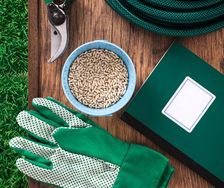
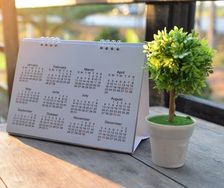
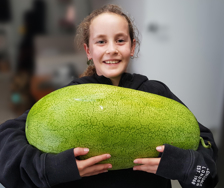

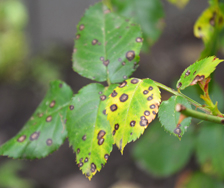
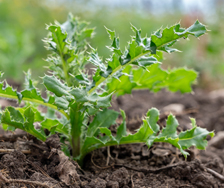











Share
Share this article on social media